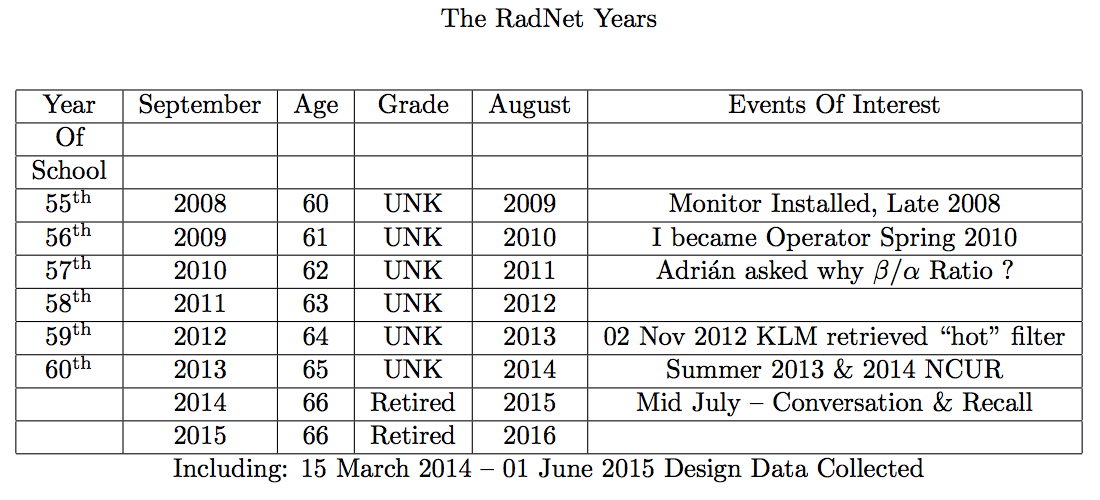
In 1956, the United States Environmental Protection Agency created the Radiation Alert Network which in 2005 became The RadNet Monitoring Network.
In 2006 the EPA installed its first near-real-time RadNet air monitoring station. Volunteer operators were required to field screen air samples to ensure short-lived isotopes had decayed away before sending filters to the EPA laboratory for further analysis.
To reduce volunteer time commitment, Effective 20 July 2015, RadNet suspended the field screening activities and asked operators to return the screening equipment, check source, rescinded SOPs, and logbook. As a result data collection has been minimized.
I reluctantly became the station operator in the spring of 2010. Fortunately, there were a couple of students willing to do the routine task of processing the filters and sending them to the EPA's laboratory.
One day a student asking questions started a process that lead me to writing an Ancillary Protocol for the RadNet Air Monitoring Program's Standard Operating Procedure.
This file (Article20151028.pdf), and this file (BetaDataSummary.pdf) comprise the core of an argument for why the EPA should reinstate the field screening of RadNet filters.
Some supporting documentation:
You can compare this information to the beta activity of long lived isotopes reported at the EPA's Envirofacts site.
The Laboratory Field Screening Equipment (LFSE) includes an alpha/beta scintillation detector, a calibration sample, and sample holders.
Operators are encouraged to learn more via the EPA's RadNet site.
The EPA's protocol for the RadNet operators is designed to ignore the short-lived isotopes collected by the monitoring station,
as intimated by the answer to
question four of the FAQ For RadNet Fixed Monitoring System Operators.
The EPA's RadNet site provides valuable information including defining benchmarks.
